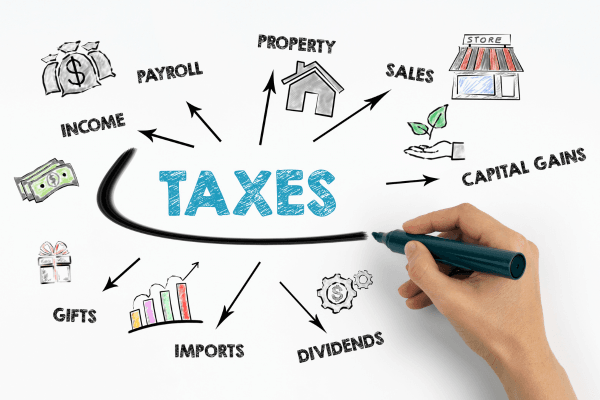Home Of Fair Facts & Tips
Reduce Tax with Negative Gearing: Investment Property Guide
Unlock the secrets of lowering your tax through negative gearing. Expert tips on investment property tax benefits inside.

In the wake of recent headlines, where the Albanese government has notably backtracked on promised tax cuts, the term "Negative Gearing" has been thrust back into the spotlight. It's a concept that, while familiar to many, remains shrouded in layers of complexity and misunderstanding. With this renewed attention, we thought it an opportune moment to peel back these layers, exploring the essence of Negative Gearing in Australia and its implications for investors and the broader economy.
What is Negative Gearing?
Negative gearing is when rental property expenses is bigger than the income it generates, resulting in a tax-deductible loss that can offset other income, including wages, for tax savings.
Introduction to Negative Gearing
In the landscape of Australian property investment, negative gearing stands out as a strategy that, despite its complexities, offers significant tax advantages and the potential for substantial capital growth. At its core, negative gearing involves the acquisition of an investment property where the cost of ownership, notably interest on the loan, exceeds the income it generates. This financial shortfall, paradoxically, can lead to long-term gains, making negative gearing a topic of interest for savvy investors aiming to optimize their portfolios. This article delves into the intricacies of negative gearing, exploring its benefits, the critical role of refinancing, and the tax considerations that accompany this investment strategy.
Understanding Negative Gearing
Negative gearing is a concept that hinges on investment property loans, where the expenses incurred in maintaining the property surpass the rental income. For Australian investors, this scenario opens the door to tax deductions on their loss, effectively reducing their taxable income. The allure of negative gearing lies in its dual promise: immediate tax relief and the prospect of capital appreciation over time. However, to fully harness the benefits of negative gearing, investors must navigate its complexities with a strategic approach, particularly when it comes to refinancing existing loans to improve financial outcomes.

Benefits of Negative Gearing
The tax deductions available through negative gearing are manifold, encompassing loan interest, property management fees, repairs, and maintenance costs. Beyond immediate tax relief, negative gearing anticipates the property's value growth, positioning investors for long-term wealth accumulation. The strategy's appeal is further magnified by the possibility of refinancing to capitalize on lower interest rates or more favourable loan terms, enhancing the investment's profitability.
Tax Considerations and Deductions
Maximizing the tax benefits of negative gearing requires a thorough understanding of eligible deductions. Investors can deduct a range of expenses, from interest on loans to property management fees and maintenance costs. Strategic record-keeping and professional advice are paramount to leveraging these deductions effectively, ensuring investors minimize their taxable income while complying with Australian tax laws.
Refinancing as a Strategy in Negative Gearing
Refinancing is a pivotal component of a successful negative gearing strategy, offering a pathway to reduced interest costs and better loan conditions. By refinancing at a lower interest rate, investors can decrease their financial outlay while maintaining the tax deductibility of their investment expenses. This manoeuvre requires careful market analysis and timing to ensure the benefits of refinancing outweigh the costs, including any fees associated with establishing a new loan.
Risks and Challenges
While negative gearing presents attractive opportunities, it also carries inherent risks, such as market volatility and the challenge of cash flow management. Investors must prepare for fluctuations in property values and ensure they have adequate reserves to cover loan obligations during periods of reduced rental income. A balanced approach, underpinned by diligent research and contingency planning, is essential to navigate these challenges successfully.
Seeking Professional Advice
Given the complexities of negative gearing and the critical role of refinancing, seeking advice from financial professionals is advisable. Tax advisors and financial planners can provide tailored guidance, helping investors navigate tax implications and refinancing options to optimize their investment strategy.
Conclusion
Negative gearing in Australia offers a nuanced investment strategy that, when navigated with care and strategic foresight, can yield significant tax advantages and capital growth. The incorporation of refinancing into this approach underscores the importance of adaptability and informed decision-making in the pursuit of investment success. With a comprehensive understanding of negative gearing's benefits, risks, and tax implications, investors can position themselves to capitalize on the opportunities it presents.
Disclaimer: Unless otherwise specified, the opinions expressed in this article are strictly for general informational and entertainment purposes only and should not be taken as financial advice or recommendation. Views are subject to change without notice at any time.
Written By

Max Refund

